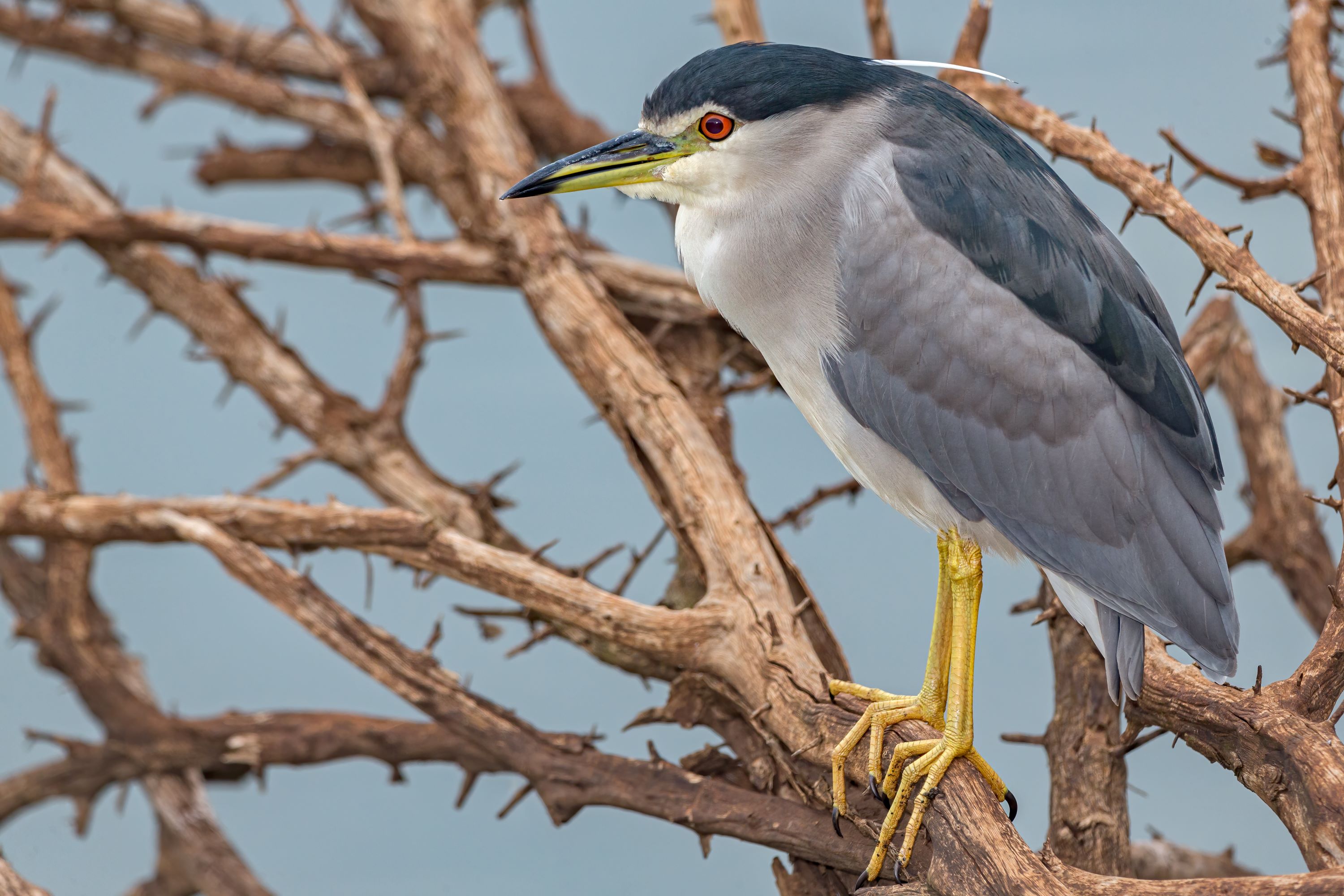
The Black-Crowned Night Heron: The Nocturnal Waterbird
Introduction to the Black-Crowned Night Heron
The Black-Crowned Night Heron, Nycticorax nycticorax, is a widely distributed heron known for its nocturnal habits and distinctive appearance. As a member of the family Ardeidae, this heron is a common sight in wetlands across the globe.
Physical Description
The Black-Crowned Night Heron stands about 60-70 cm tall with a stocky build and relatively short legs and neck. Its plumage is primarily grey and white, with a striking black cap and back. The eyes are red, and during the breeding season, it sports two or three long white plumes on the back of its head.
Habitat and Distribution
This heron inhabits a wide range of freshwater and saltwater habitats, including marshes, rivers, lakes, and estuaries. It is found in temperate to tropical regions across North and South America, Europe, Asia, and Africa.

Behavior and Lifestyle
The Black-Crowned Night Heron is primarily nocturnal, spending the day roosting in trees or dense vegetation near water. At dusk, it becomes active, feeding and moving around its habitat.
Feeding Habits
Its diet consists of fish, crustaceans, insects, and small mammals or birds. The heron forages by standing still at the water’s edge and waiting to ambush prey or by walking slowly through shallow waters.
Breeding and Nesting Habits
Breeding typically occurs in colonies, often with other species of herons or egrets. The nests are built in trees, bushes, or reeds, usually over water. They are constructed from sticks and lined with softer materials.

Egg Laying and Incubation
The female lays 3 to 5 pale blue-green eggs. Both parents share the responsibility of incubating the eggs, which hatch after about 21-26 days. The nests’ locations help protect the eggs from potential ground predators.
Chick Rearing and Parental Care
Chicks are altricial and depend on their parents for food and protection. Both parents feed the chicks, which fledge at about 6 weeks old but may stay with the parents for additional support.
Vocalizations and Communication
While generally quiet during the day, the Black-Crowned Night Heron can be vocal at night. It emits a series of loud, harsh croaks and squawks, particularly in the breeding colonies.

Conservation Status
The Black-Crowned Night Heron is listed as Least Concern by the IUCN. However, it faces habitat loss and pollution in parts of its range, which can impact local populations.
Similar Species and Taxonomy
Part of the order Pelecaniformes, the Black-Crowned Night Heron is closely related to other night herons like the Yellow-Crowned Night Heron. It can be distinguished by its black crown and the lack of the yellow coloring seen in its cousin.
The Black-Crowned Night Heron in Utah
In Utah, the Black-Crowned Night Heron can be found in suitable wetland habitats. It is often seen in marshes, along rivers, and at the edges of lakes throughout the state, particularly during the breeding season.

Conclusion
The Black-Crowned Night Heron, Nycticorax nycticorax, plays a significant role in the ecosystem as both predator and prey. Its presence in diverse wetlands across the world highlights the importance of these habitats for maintaining global biodiversity. Efforts to conserve wetland habitats not only benefit the Black-Crowned Night Heron but also a myriad of other species that depend on these ecosystems.